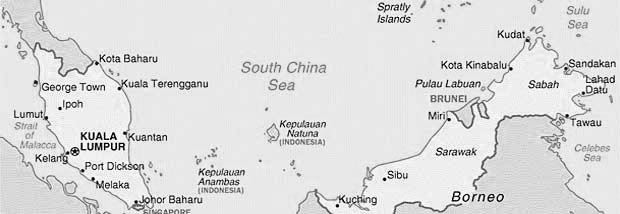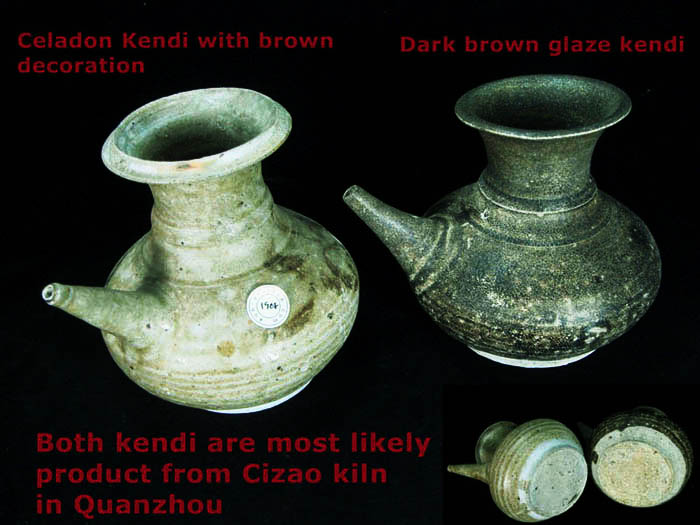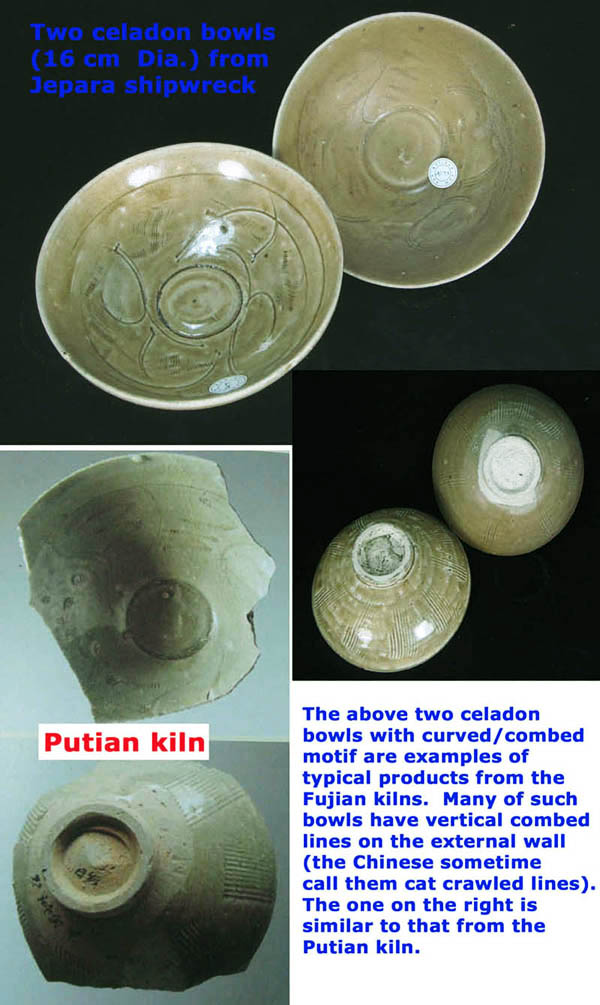Kudat (Tanjung Simpang Mengayau) Song Shipwreck
The wreck was reportedly discovered by fishermen on April 15, 2003. However, based on its condition, it is evident that looting had already taken place before the official announcement. Some of the ceramics from this wreck made their way into antique shops in Kota Kinabalu. The Sabah Museum granted Nanhai Marine Archaeology Sdn Bhd, a salvage company, a permit to excavate the site. More than 800 ceramic and non-ceramic items were recovered from a depth of 400 meters off Tanjung Simpang Mengayau, near Kudat in Sabah.
Tanjung Simpang Mengayau, meaning "lingering junction," is where the South China Sea meets the Sulu Sea. The treacherous coastline has been the site of numerous historical shipwrecks.
 |
| Location of wreck |
The Kudat wreck, dated to the Song period, is the oldest known shipwreck discovered in Malaysian waters. Some of the salvaged artifacts are now displayed at the Sabah Museum.
I visited the Sabah Museum in August 2011. According to the museum's brief introduction to the wreck, it was a Chinese merchant ship, likely en route to Brunei. Ancient Chinese records indicate that Brunei had diplomatic and trading relations with China dating back to the Song Dynasty. The following types of ceramics were found:
- Celadon bowls and dishes with carved motifs – from the Tongan (同安) kiln in Fujian Province
- Qingbai ewers and covered boxes – from Fujian Province
- Celadon dishes with carved floral motifs – from Longquan kilns
- brown glazed Kendis and jars – from Fujian Cizao kilns
|
|
| Ceramics recovered form the Kudat wreck |
|
|
| The brown glazed 'mercury jars', ewers and kendis are most likely products of Cizao kiln in Quanzhou. |
|
|
|
|
 |
| Cizao kiln kendis in Jepara wreck |
|
|
|
|
| Fujian Longquan-inspired celadon bowls with carved/combed decoration in Kudat wreck |
 |
|
|
| Qingbai ewers. Similar ewers were recovered from Jepara wreck |
 |
After examining the ceramic artifacts on display, I believe they date to the early Southern Song period. Some Qingbai ewers, covered boxes, Fujian celadon pieces with carved motifs, and Fujian Cizao brown-glazed kendis resemble those found in the Jepara shipwreck. The celadon bowls and dishes with carved motifs are from Fujian kilns, and while some may have been produced in Tongan (同安), it is also possible that they came from other coastal kilns. Excavations have revealed that kilns in counties such as Nanan (南安), Fuqing (福清), Putian (莆田), Anxi (安溪), and Minhou (闽侯) also produced similar celadon wares. The dark brown kendis and jars are most likely products of the Quanzhou Cizao (泉州磁灶) kiln.
The large number of Fujian ceramics found in the Jepara, Nanhai 1, and Kudat wrecks is a testament to Quanzhou’s importance as a major maritime trade hub. During the Southern Song period, Quanzhou replaced Guangzhou as China’s most significant port, maintaining its prominence into the Yuan period. Like Guangdong during the Tang and Northern Song periods, the Fujian coastal region capitalized on its strategic location by establishing kilns that produced ceramics imitating those from renowned kiln sites. These included Longquan celadon, Jingdezhen Qingbai, and Jian temmoku bowls. Such ceramics were primarily intended for consumers in Southeast Asia, though some also reached India, the Middle East, and East Africa through maritime trade routes.
Conclusion
The discovery of the Kudat Song shipwreck provides valuable insight into the maritime trade networks of the Song Dynasty. The cargo, particularly the ceramics, highlights Quanzhou’s role as a dominant trading port and the widespread influence of Chinese pottery across Southeast Asia. While looting before the wreck’s official excavation was unfortunate, the artifacts that have been preserved offer a glimpse into the rich history of commerce, cultural exchange, and seafaring during the Song period. Further studies and comparisons with other shipwrecks continue to deepen our understanding of this era’s trade dynamics and craftsmanship.
Written by NK Koh (July 10, 2012), updated 7 Mar 2025